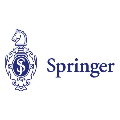Deep learning (DL) algorithms rely on massive amounts of labeled data. Semi-supervised learning (SSL) and active learning (AL) aim to reduce this label complexity by leveraging unlabeled data or carefully acquiring labels, respectively. In this work, we primarily focus on designing an AL algorithm but first argue for a change in how AL algorithms should be evaluated. Although unlabeled data is readily available in pool-based AL, AL algorithms are usually evaluated by measuring the increase in supervised learning (SL) performance at consecutive acquisition steps. Because this measures performance gains from both newly acquired instances and newly acquired labels, we propose to instead evaluate the label efficiency of AL algorithms by measuring the increase in SSL performance at consecutive acquisition steps. After surveying tools that can be used to this end, we propose our neural pre-conditioning (NPC) algorithm inspired by a Neural Tangent Kernel (NTK) analysis. Our algorithm incorporates the classifier's uncertainty on unlabeled data and penalizes redundant samples within candidate batches to efficiently acquire a diverse set of informative labels. Furthermore, we prove that NPC improves downstream training in the large-width regime in a manner previously observed to correlate with generalization. Comparisons with other AL algorithms show that a state-of-the-art SSL algorithm coupled with NPC can achieve high performance using very few labeled data.
翻译:深度学习( DL) 算法依靠大量贴标签的数据。 半监督学习( SSL) 和积极学习( AL) 分别利用未贴标签的数据或仔细获取标签,旨在降低标签的复杂性。 在这项工作中, 我们主要侧重于设计AL算法, 但首先主张改变应该如何评价AL算法。 虽然以池为基础的AL 中很容易获得未贴标签的数据, AL 算法通常通过测量连续获取步骤监督学习( SL) 性能的提高来评价。 由于这是衡量从新获得的事例和新获得的标签中获得的业绩收益, 我们建议通过测量连续获取步骤的SSL性能来评估AL 算法的标签效率。 在调查可用于此目的的工具之后, 我们提议改变由Neural Tangent Kernel (NTK) 分析所启发的神经预调控( NPC) 算法。 我们的算法包含了未贴标签数据的不确定性, 并惩罚候选人分批中多余的样本, 以高效获得一套信息化的标签。 此外, 我们证明NPC 改进了以前高水平的LAS 的下游测试方法, 展示了高端的SLAS。



